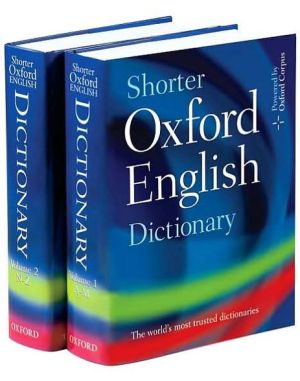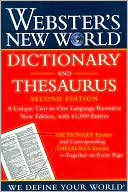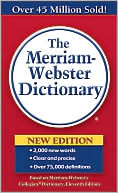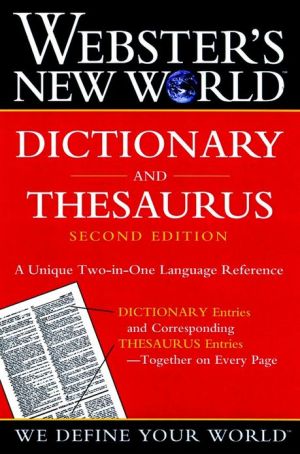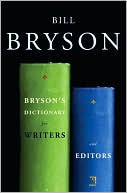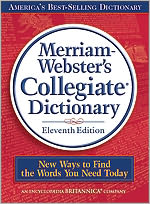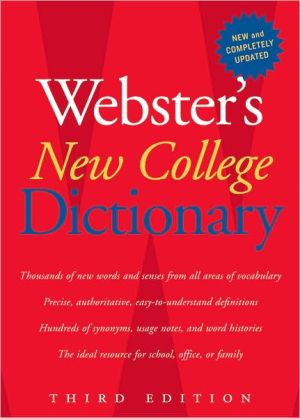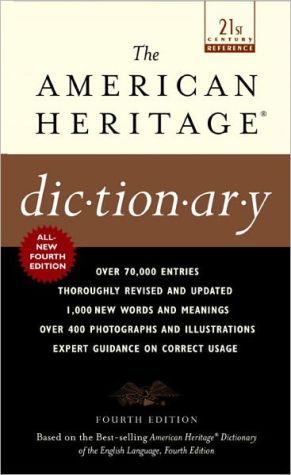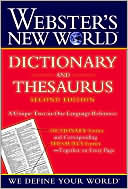Shorter Oxford English Dictionary
Here is a new edition of the acclaimed Shorter Oxford English Dictionary , the first since 2002, updated, enlarged, and enlivened by new words, new definitions of old words, new illustrative quotations--and a new, fully customizable CD-ROM.\ \ If the 20-volume Oxford English Dictionary is the mother of all dictionaries, the Shorter is its most accomplished offspring. At one-tenth the size of OED--and a fraction of the price--the Shorter offers one-third the content and the same quality of...
Search in google:
Here is a new edition of the acclaimed Shorter Oxford English Dictionary , the first since 2002, updated, enlarged, and enlivened by new words, new definitions of old words, new illustrative quotations--and a new, fully customizable CD-ROM.If the 20-volume Oxford English Dictionary is the mother of all dictionaries, the Shorter is its most accomplished offspring. At one-tenth the size of OED--and a fraction of the price--the Shorter offers one-third the content and the same quality of lexical excellence of its parent dictionary. Indeed, no other dictionary, apart from the OED itself, comes close to the Shorter's range and depth, offering over 500,000 definitions that cover virtually every word or phrase in use in English--worldwide--since 1700. Each entry offers everything you would expect from a leading unabridged dictionary: it identifies each word's various meanings, origins, part of speech, pronunciation, and combinations in which the word is often found, as well as cross-references to related words. The Shorter , however, offers something that no competitor can match: the historical, literary approach made justly famous by the OED. Thousand upon thousands of changing meanings are followed throughout history, illustrated by 85,000 quotations from 7,000 authors.And now, with 2,500 new words and 500 new quotations, the Shorter is fresher than ever, fully responsive to ever-changing English language.The SOED has opened its pages to the thousands of new words which have come into use since the previous edition and which have expanded the precision and expressive power of English. Here are such new words as Afrobeat, carbon-neutral, darknet, heaviosity,impactful, knuckle-dragger, nanomaterial, retro-futurist, smoosh, testosteronic, webinar, and thousands more. (To call someone a testosteronic, retro-futurist knuckle-dragger is no longer an incomprehensible insult). Michael F. Bemis - Library Journal As its title makes explicit, this is an abridgement of the Oxford English Dictionary (OED), 2d ed., published in 1989. Within the covers of 20 large volumes, the editors of the OEDundertook the task of listing and defining " . . . the English vocabulary from the time of the earliest records down to the present day, with all the relevant facts concerning their form, sense-history, pronunciation, and etymology."One major difference between the OEDand the Shorter Oxford English Dictioary(SOED) is that the latter has jettisoned most archaic and obsolete words, exceptions being holdovers from the Bible, Shakespeare, and other linguistic relics that are still a part of our living language. Another is that while the OEDprovides profuse examples of a particular word's employment by literary lions and silver-tongued orators, the SOEDparcels out quotations sparingly; these passages are highlighted with gray shading. (According to Oxford, 500 quotations have been added by authors writing in the last ten years.)A comparison between the sixth and fifth editions of the SOEDfurther reveals the addition of about 2500 new entries; understandably, most relate to scientific and technological concepts. Spelling has been updated to reflect current trends, while usage notes have been expanded in response to our newfound sensitivity to expressions related to race, gender, sexual orientation, and so on. Especially useful are explanatory guides to using and navigating the dictionary (e.g., abbreviations, pronunciation) and the inclusion of a CD, which contains the entirety of the SOED.There are problems worth noting, however.Most important: the definitions are less than definitive. "Sherry," for example, is described as "a fortified white wine orig. from S. Spain, drunk esp. as an appetizer." In Webster's Third New International Dictionary, the term is defined as "a fortified wine of Spanish origin ranging from pale to dark amber in color and from very dry to sweet in taste with typically a distinctive nutty flavor." This example represents a pattern found throughout, which is a kind of bare-bones approach to lexicography that leaves the reader with only a rudimentary understanding of a word's meaning. It also doesn't help that there are no illustrations, maps, color plates, charts, or tables; it is merely a black-and white desert of the alphabet.Further, an emphasis is placed on British English, which as time goes on, is more and more distant from its American cousin. Therefore, no heading exists for "flashlight," as in "a small battery-operated portable electric light" (Webster's Third), since such a device is called an "electric torch" across the pond. While "gasoline" is included, it's described as being "used for heating and lighting," by which the editors probably mean "kerosene." The American sense of "gasoline," that is, fuel for an automobile, is not listed, since this is what the Brits refer to as "petrol" (short for petroleum), which we Yanks would call oil.
\ Library JournalAs its title makes explicit, this is an abridgement of the Oxford English Dictionary (OED), 2d ed., published in 1989. Within the covers of 20 large volumes, the editors of the OEDundertook the task of listing and defining " . . . the English vocabulary from the time of the earliest records down to the present day, with all the relevant facts concerning their form, sense-history, pronunciation, and etymology."\ One major difference between the OEDand the Shorter Oxford English Dictioary(SOED) is that the latter has jettisoned most archaic and obsolete words, exceptions being holdovers from the Bible, Shakespeare, and other linguistic relics that are still a part of our living language. Another is that while the OEDprovides profuse examples of a particular word's employment by literary lions and silver-tongued orators, the SOEDparcels out quotations sparingly; these passages are highlighted with gray shading. (According to Oxford, 500 quotations have been added by authors writing in the last ten years.)\ A comparison between the sixth and fifth editions of the SOEDfurther reveals the addition of about 2500 new entries; understandably, most relate to scientific and technological concepts. Spelling has been updated to reflect current trends, while usage notes have been expanded in response to our newfound sensitivity to expressions related to race, gender, sexual orientation, and so on. Especially useful are explanatory guides to using and navigating the dictionary (e.g., abbreviations, pronunciation) and the inclusion of a CD, which contains the entirety of the SOED.\ There are problems worth noting, however.Most important: the definitions are less than definitive. "Sherry," for example, is described as "a fortified white wine orig. from S. Spain, drunk esp. as an appetizer." In Webster's Third New International Dictionary, the term is defined as "a fortified wine of Spanish origin ranging from pale to dark amber in color and from very dry to sweet in taste with typically a distinctive nutty flavor." This example represents a pattern found throughout, which is a kind of bare-bones approach to lexicography that leaves the reader with only a rudimentary understanding of a word's meaning. It also doesn't help that there are no illustrations, maps, color plates, charts, or tables; it is merely a black-and white desert of the alphabet.\ Further, an emphasis is placed on British English, which as time goes on, is more and more distant from its American cousin. Therefore, no heading exists for "flashlight," as in "a small battery-operated portable electric light" (Webster's Third), since such a device is called an "electric torch" across the pond. While "gasoline" is included, it's described as being "used for heating and lighting," by which the editors probably mean "kerosene." The American sense of "gasoline," that is, fuel for an automobile, is not listed, since this is what the Brits refer to as "petrol" (short for petroleum), which we Yanks would call oil.\ —Michael F. Bemis\ \ \ \ \ \ School Library JournalGr 9 Up -With 2500 more entries than in the 2002 edition, this expansive resource incorporates new terms and slang from the fields of technology, computing, communications, and science. In addition, the illustrative quotes in the entries have been updated to incorporate recent material, and the language in the definitions has been changed to reflect modern sensibilities about ethnicity, sexuality, and disabilities. A new essay, a€œA Brief History of English,a€ leads the volume, and it is a stalwart reminder of the Dictionary a€™s purpose: to provide historical context to our language. As in previous editions, each entry includes pronunciation, part of speech, variant spellings, a quote, and information about the field and origin of the word. This set is so comprehensive for its size that ita€™s a natural and economical alternative to the 20-volume Oxford English Dictionary (2002) for smaller libraries.-Kathleen Kelly MacMillan, Carroll County Public Library, MD\ \ \
